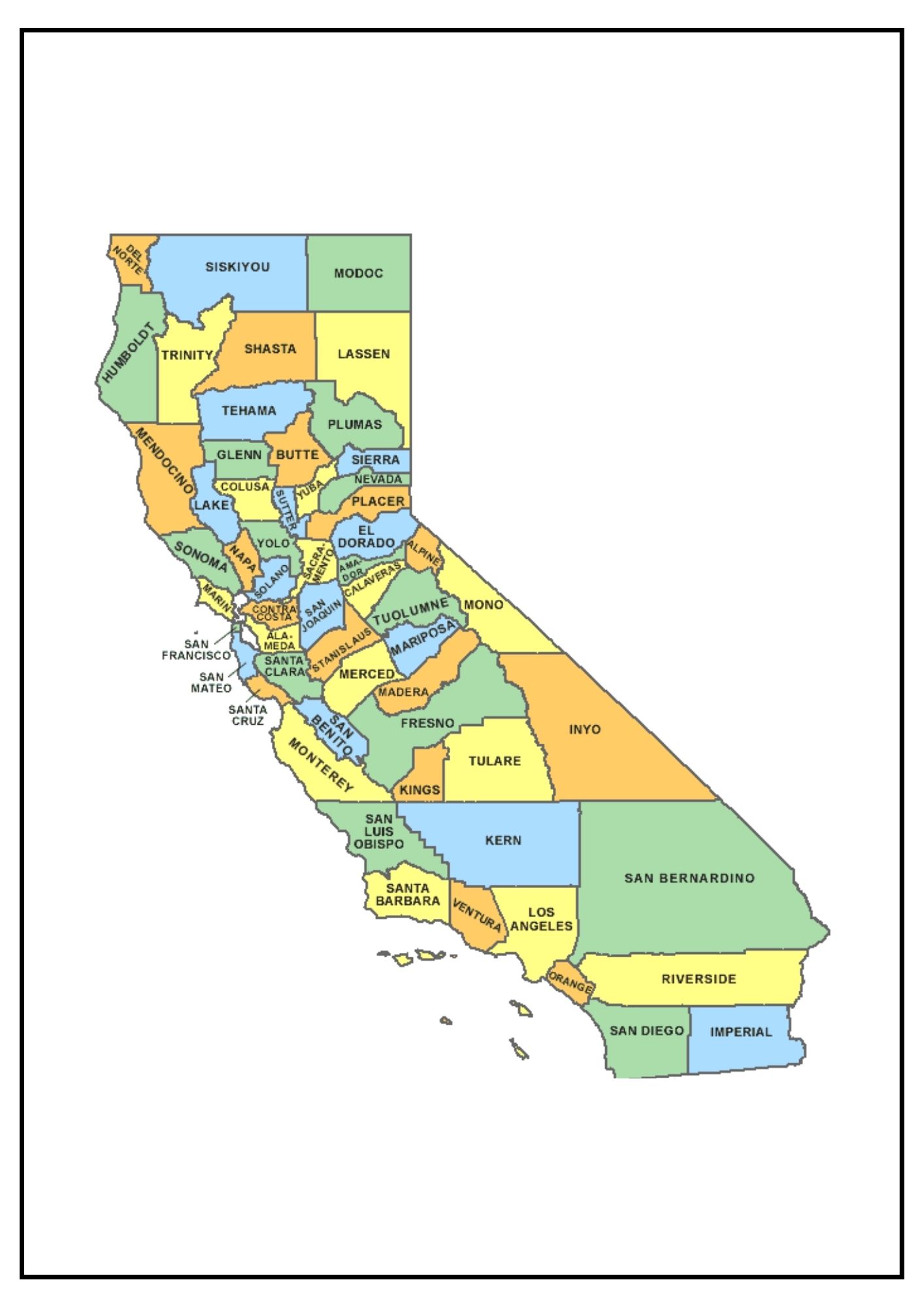
Curious to know how many counties are in California? You’d be surprised how many people ask the same question. Whether it’s for school projects, travel plans, or simple trivia, the magic figure 58 always surfaces, and stillthat short answeronly tells half the story.
California’s counties forma tapestry of extremes: fog-kissed seaside towns, high-elevation wilderness zones, vast agricultural heartlands, and global entertainment capitals. Every county has a chapter in the state’s saga, forged through gold-rush dreams, promising new industries, and relentless population booms.
In the sections ahead, we’ll explore why California ended up with 58 counties, what each county actually does for its residents, and the record-holders—from the tiniest to the most populous. When we’re done, you’ll own the knowledge—and sound like a local expert with confidence.
How the Golden State Reached 58 Counties
When California joined the Union in 1850, the map was a patchwork of just 27 jurisdictions. A tidal wave of forty-niners and immigrants pushed officials to subdivide vast districts. Before the century turned, the count had risen to over five dozen counties, and that same year the final five were added, locking in the now-famous tally of 5 8.
Capitol archives indicate that many break-away regions stemmed from three major pressures:
- Sheer distance left settlers days from the nearest courthouse.
- Tax disputes between miners and farmers sparked break-ups.
- Cultural rivalries demanded tailored governance.
Within a single generation, the political map settled. Today, even bold secession schemes rarely get ballot traction, leaving historians to label the era of county creation decisively over.
From Kelp Forests to High Deserts: County Geography
Plot a route from foggy Crescent City to the date groves of Coachella, and you’ll traverse a climatic kaleidoscope. Ocean-brushed jurisdictions soak up Mediterranean precipitation, while great agricultural belts battle drought cycles.
- Alpine districts such as El Dorado, Tuolumne, and Sierra receive winter snows.
- Delta counties balance peat islands and orchards.
- Channel-coast administrators like Santa Barbara manage marine sanctuaries.
That geographic spread underpins how water rights, zoning, and ag yields diverge so sharply. Topography dictates everything from wage levels to weekend hobbies.
What Counties Actually Do
Within the state’s tiered system, cities tackle local bylaws, but counties are tasked with the bread-and-butter functions that hold civilisation together. Cradle-to-grave—vital records, coroner reports, property deeds—all reside at the recorder-assessor’s office.
County law-enforcement offices patrol unincorporated land, while county benches hear civil suits. Health departments distribute food assistance. Budget battles fill chamber galleries with activists.
Example: Contra Costa’s Shared Services Model
Tiny Alpine operates from a single two-story courthouse, highlighting how flexible the system how many counties in california is. Uniformity would never work when land areas shift from 47 to 20 000 sq mi.
At day’s close, county offices bridge Sacramento’s big laws and local reality. Grasping their portfolio guides newcomers navigating paperwork.
Demographic and Fiscal Highlights
The state shelters over thirty-nine million people, but that population is far from evenly spread. LA’s single jurisdiction packs nearly 25 %. Conversely, high-elevation Alpine could fit its voters into a high-school gym.
- Most populous: County of Los Angeles
- Fewest people: County of Alpine
- Biggest footprint: San Bernardino County
- Tightest borders: City & County of SF
Economically, the disparities are just as sharp. Silicon Valley counties report six-figure median incomes, while cotton-and-almond hubs face commodity price swings. This revenue gap informs legislative redistricting every decade.
Knowing which county tops which list pays dividends: county borders redraw home-buying budgets and business licences.
An Epic 58-County Road Trip
County-collecting hobbyists, bagging all 58 jurisdictions ranks as a top geo-challenge. One ambitious loop begins in sunny San Diego, follows Highway 101 past surf towns, curves inland at Monterey, then threads through rice-field flats and orchard grids, before ascending into the Sierra Nevada for old stamp mills.
Regional Mini-Loops
- Southern Swing – Mission trail coast; 10 counties in three days.
- Valley Ribbon – Grapes to rice paddies; produce-market run.
- Shasta & Siskiyou Turn – crater-rim roads; hidden hot springs.
Close the circuit in El Centro, having logged 1 400–2 000 miles. By then, you can brag that you’ve lived the answer to the county-count question—because you’ve seen them all!
FAQ
Wondering how the county system works? Start with these quick answers.
How many counties does California have?
Government documents list fifty-eight counties—a total locked in for over a century. Check any authoritative source, and you’ll find the same figure: 58.
Most populous California county?
LA County leads by a wide margin, housing roughly one in four Californians. Decades of immigration, entertainment dominance, and job growth keep the numbers high.
Least populous California county?
Tiny Alpine County sits at the bottom of the population chart, with fewer than 1 200 inhabitants. High-elevation geography naturally restricts settlement, making it a haven for solitude seekers.
What is California’s biggest county geographically?
San Bernardino County spans the most ground covering a footprint larger than nine U.S. states. Its sheer scale means climate zones shift from alpine snow to Mojave heat within county lines.
How did California end up with 58 counties?
Gold-rush politics, rail expansion, and farmland disputes carved today’s boundaries, ending when Imperial County formed in 1907. Every modern effort to create a new county stalls in committee or dies at the ballot box.
Could a region break away to become its own county today?
Legally, yes—state law allows it, though the process is arduous. Petition drives, feasibility studies, dual-county referenda, and a two-thirds vote in Sacramento make secession rare. That’s why no county lines have moved since the early 1900s.
What services do California counties provide to residents?
County governments deliver core public services: property assessments, public hospitals, welfare programs, and jails. Without county infrastructure, everything from jury duty to restaurant inspections would grind to a halt.